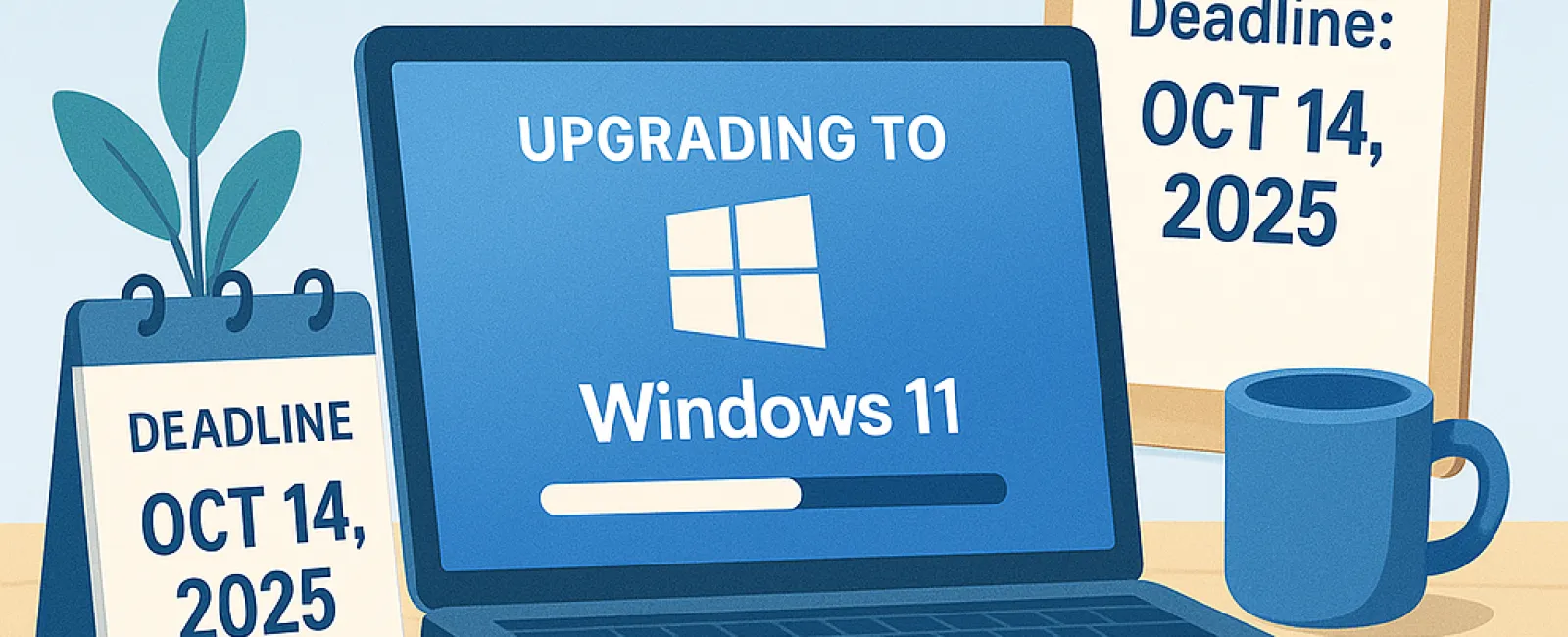June 23, 2025
If you're still using Windows 10 on your business computers, it's important to act now because time is running out.
Microsoft will stop supporting Windows 10 on October 14, 2025. After that date, there will be no more security updates, bug fixes, or technical support.
The real issue for business owners is that delaying the upgrade isn't just about eventually needing to switch. It's about the risks and costs you face by waiting.
Putting Off Upgrades Is Costly
Upgrading every machine may seem like an unnecessary expense, so it's tempting to postpone it... until something goes wrong.
Here's what delaying actually costs you:
1. No More Security Protection
When Microsoft stops updating Windows 10, any new security flaws become your problem. Hackers target outdated systems because they're easier to breach. It's like locking your front door but leaving the windows open. A security breach could cost thousands or even jeopardize your entire business.
2. Compatibility Problems
Many business applications, including accounting software, CRMs, and specialized tools, are already dropping support for Windows 10. If your software crashes during important work or client presentations, it could be very costly. New hardware like printers and security devices may also stop working properly with Windows 10.
3. Reduced Productivity
Old systems run slower, crash more often, and frustrate employees. Even small delays add up, lowering efficiency, morale, and competitiveness. If each employee loses 10 to 15 minutes daily due to tech issues, think about the impact over a month.
4. Emergency Upgrades Cost More
Waiting until systems fail leads to rushed hardware purchases, expensive IT labor, and business interruptions. Planning your upgrade now can avoid this costly scramble later.
5. Compliance Risks
If your business handles sensitive data or must follow regulations like HIPAA or PCI-DSS, using unsupported software could lead to fines or legal trouble. These standards require up-to-date security, which Windows 10 will no longer provide after October 2025.
What Smart Businesses Are Doing
They're taking action ahead of time by:
- Reviewing which devices need replacing
- Simplifying software and tools
- Strengthening cybersecurity
- Planning IT budgets for 2025
How To Make The Upgrade Easier
We suggest:
- Checking device compatibility since not all machines can run Windows 11
- Auditing your applications to ensure they work on Windows 11 or later
- Budgeting for new hardware early to avoid supply delays
- Working with an IT partner to manage the transition smoothly without downtime
Don't Wait Until The Last Minute
Delaying the upgrade will cost more money, cause stress, and lead to missed opportunities. We're helping small businesses upgrade smartly with careful planning and minimal disruption to support future growth.
Click here or give us a call at 609-676-3597 to book your FREE 15-Minute Discovery Call and we'll help you identify what needs upgrading, what can stay and how to build a transition plan that won't disrupt your business before the deadline.





